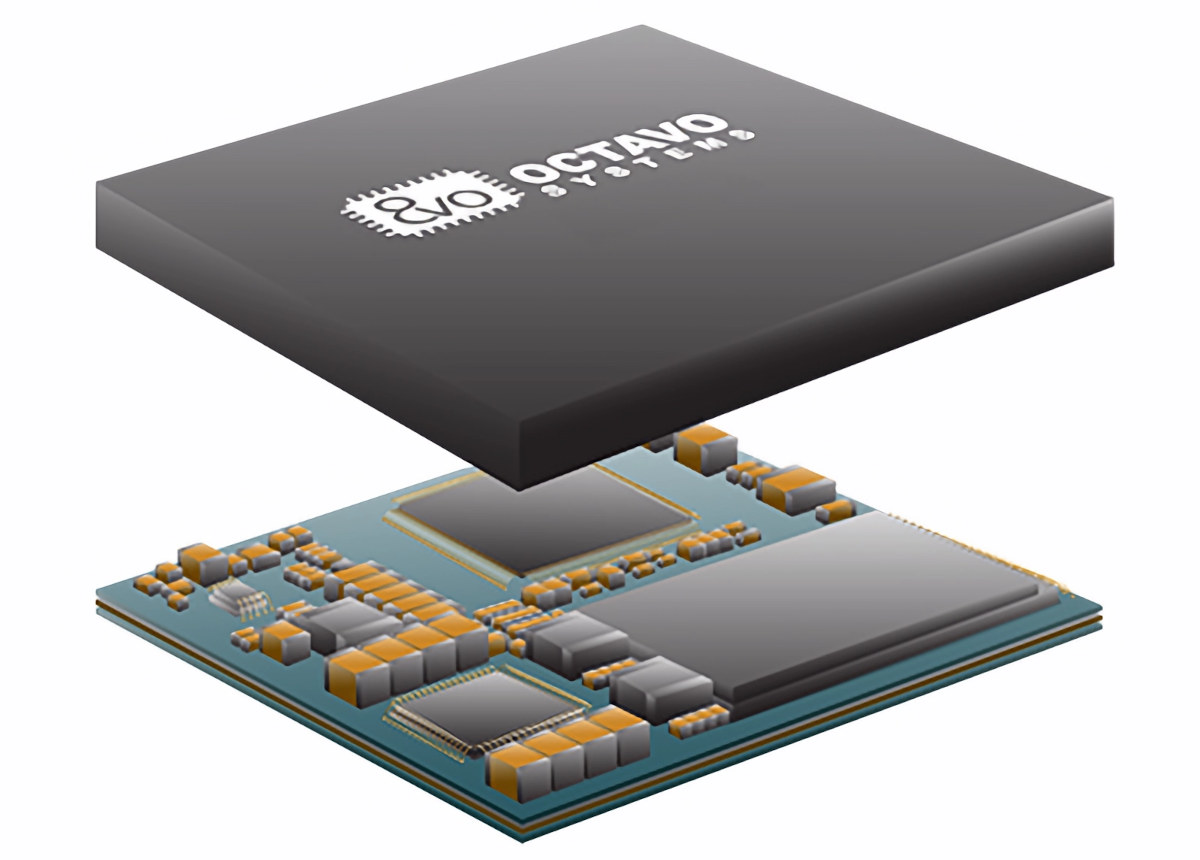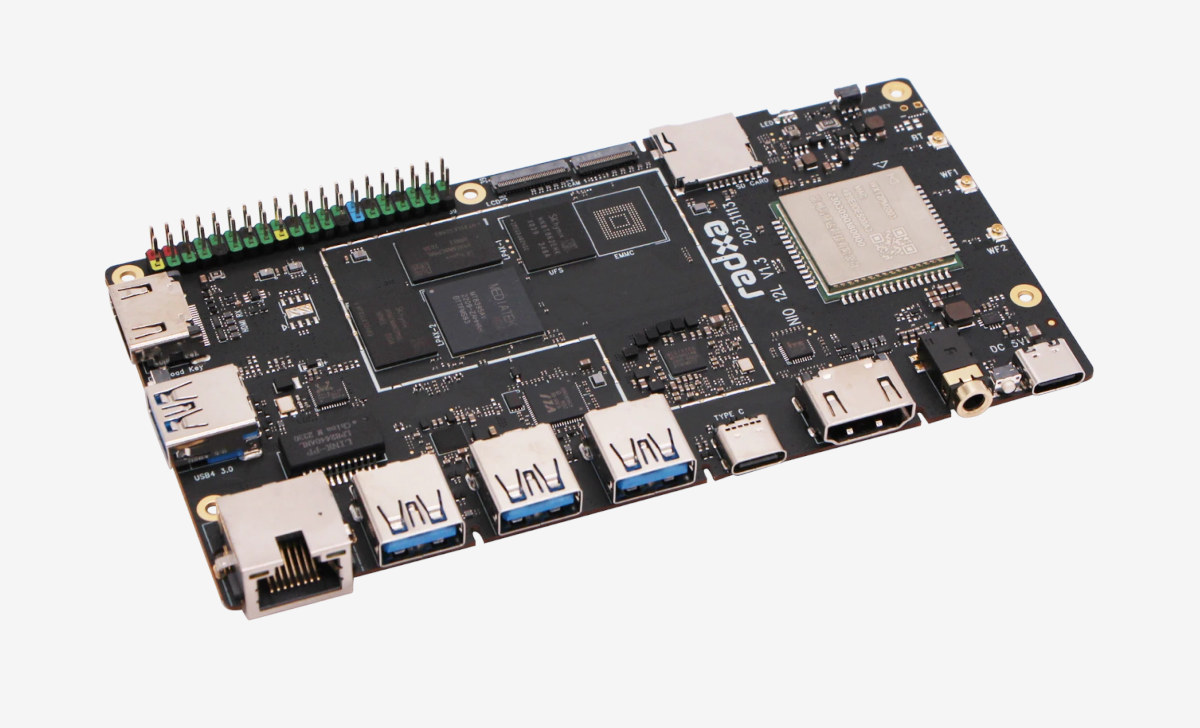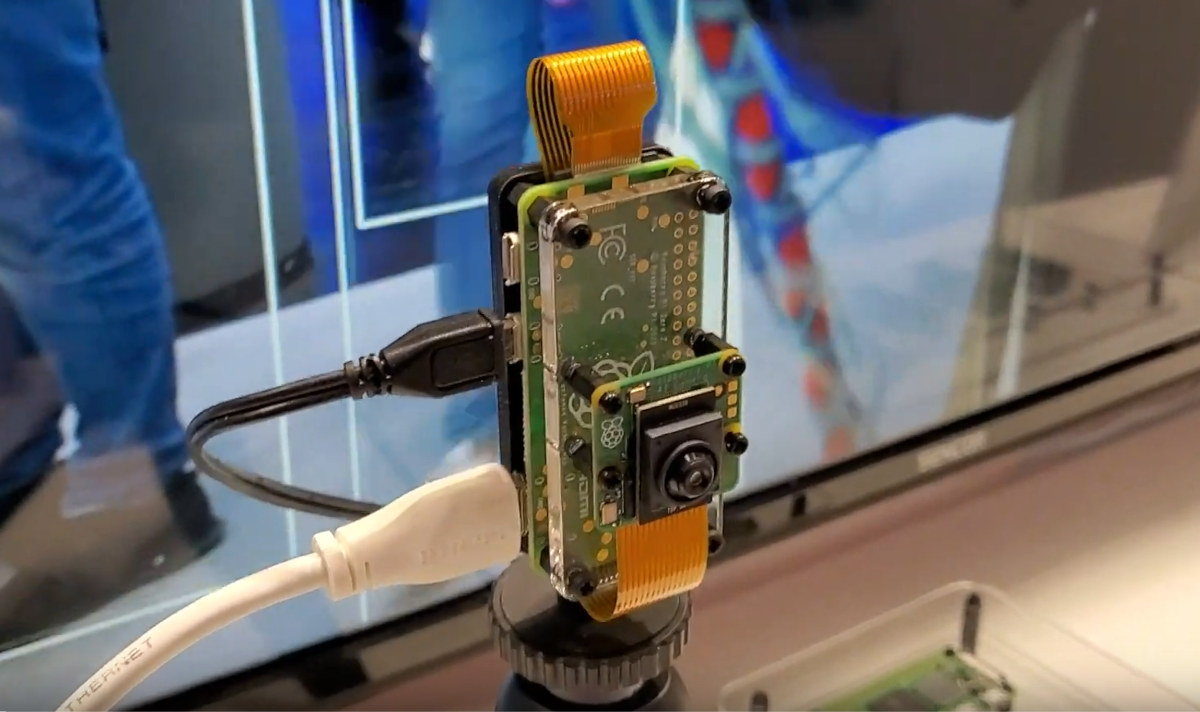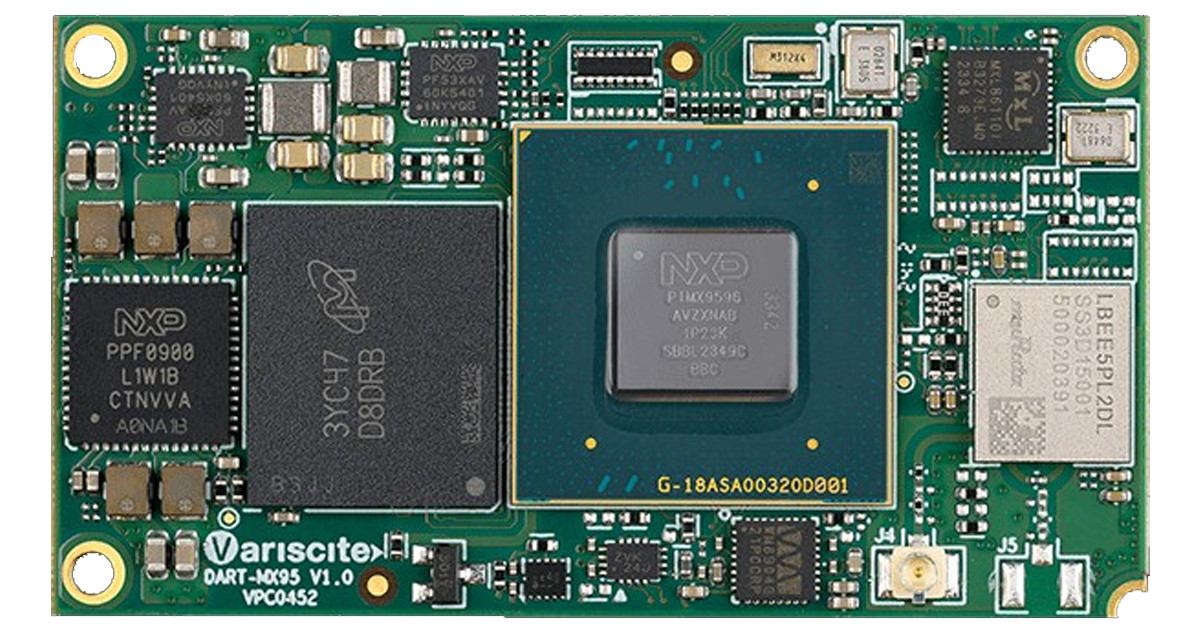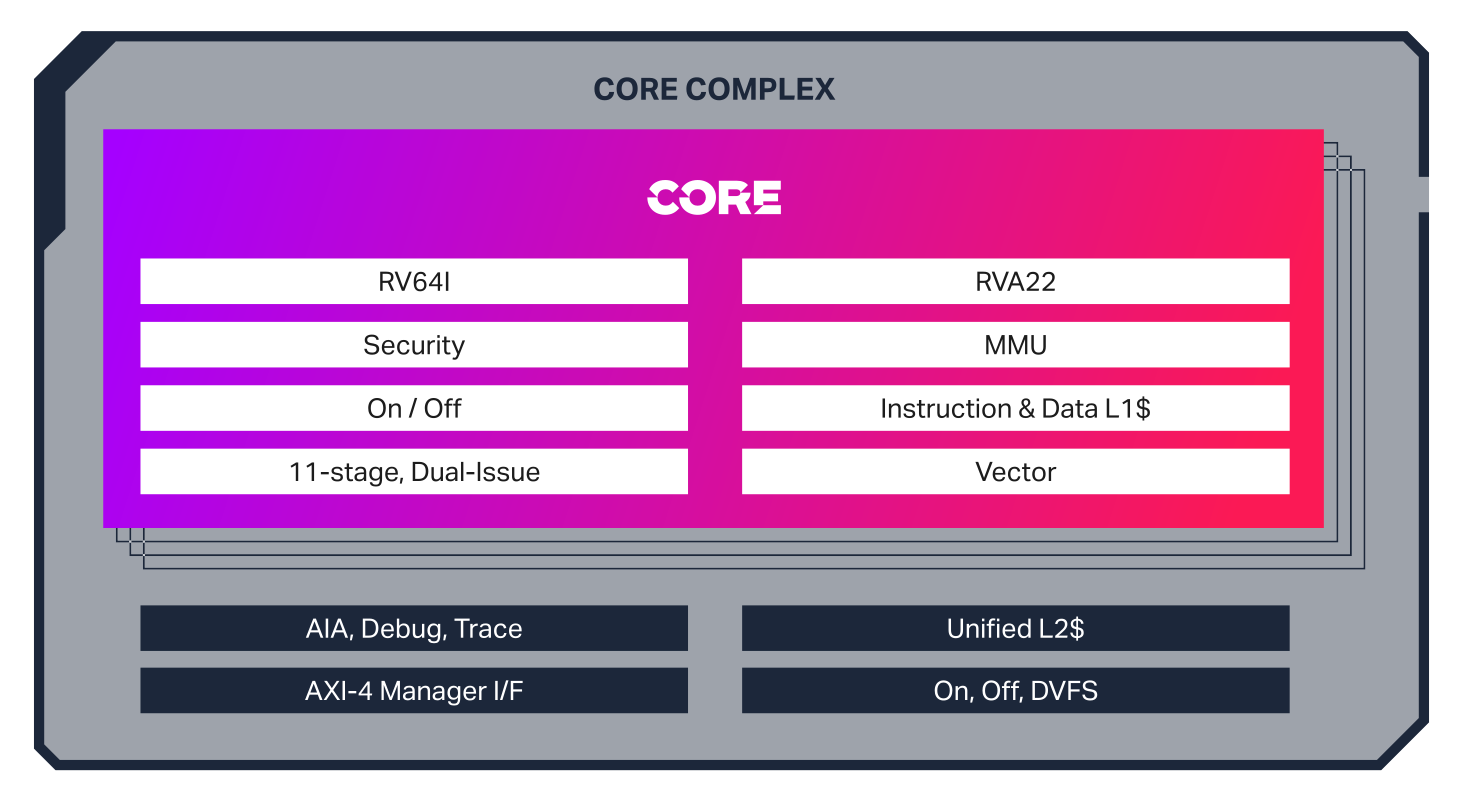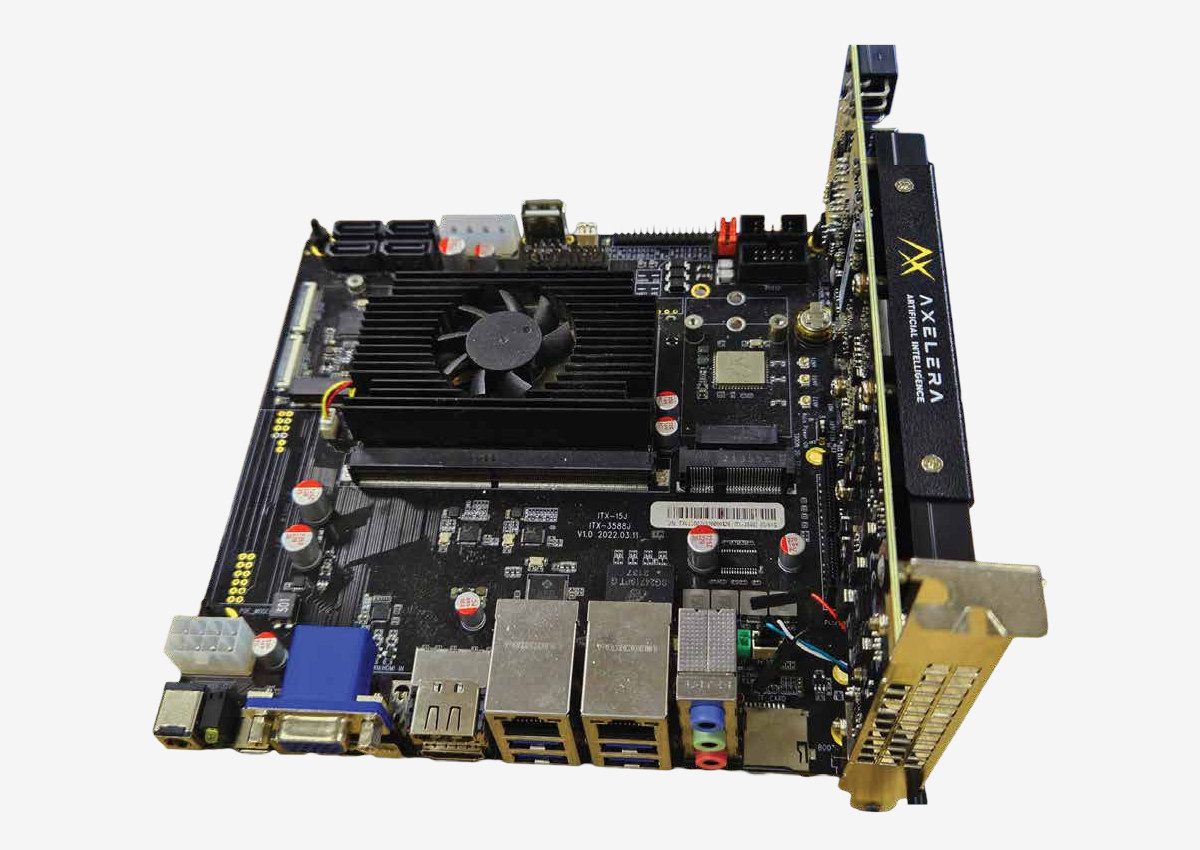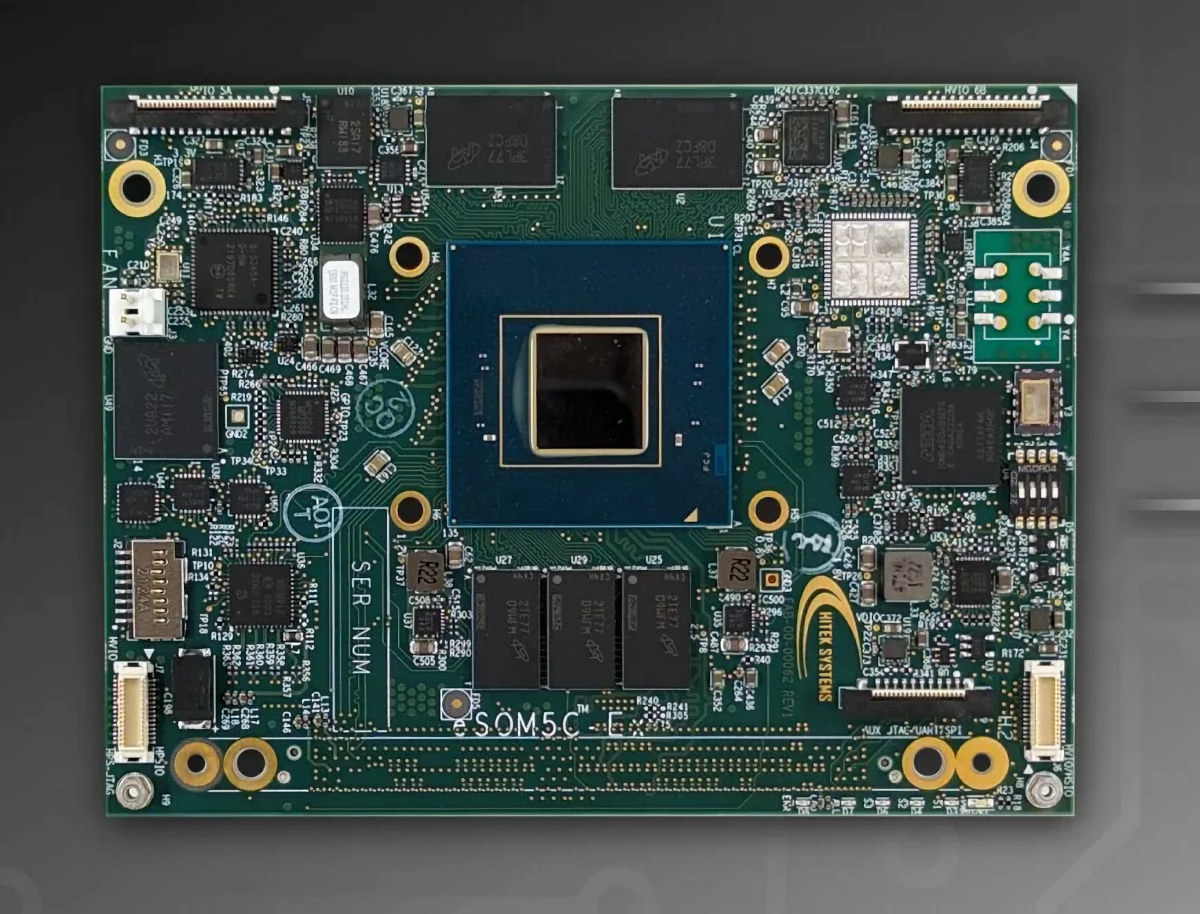Octavo Systems OSD32MP2 is a family of two System-in-Package (SiP) modules, comprised of the OSD32MP2 and OSD32MP2-PM, based on the STMicro STM32MP25 Arm Cortex-A35/M33 AI processor, DDR4 memory, and various components to reduce the complexity, size, and total cost of ownership of solutions based on the STM32MP2 chips. The OSD32MP2 is a larger, yet still compact, 21x21mm package with the STM32MP25, DDR4, EEPROM, oscillators, PMIC, passive components, and an optional RTC, while the OSD32MP2-PM is even smaller at 14x9mm and combines the STM32MP25, DDR4, and passive components in a single chip. OSD32MP2 specifications: SoC – STMicro STM32MP25 CPU – Up to 2x 64-bit Arm Cortex-A35 @ 1.5 GHz MCU 1x Cortex-M33 @ 400 MHz with FPU/MPU; 1x Cortex M0+ @ 200 MHz in SmartRun domain GPU – VeriSilicon 3D GPU @ 900 MHz with OpenGL ES 3.2 and Vulkan 1.2 APIs support VPU – 1080p60 H.264, VP8 video decoder/encoder Neural […]
Radxa NIO 12L – A low-profile MediaTek Genio 1200 SBC with Ubuntu certification for at least 5 years of updates
Radxa NIO 12L is a low-profile single board computer (SBC) based on the MediaTek Genio 1200 octa-core Cortex-A78/A55 SoC with a 4 TOPS NPU that got Ubuntu certification with at least 5 years of software update, and up to 10 years for extra payment. The board comes with up to 16GB RAM, 512GB UFS storage, HDMI, USB-C (DisplayPort), and MIPI DSI video interfaces, a 4K-capable HDMI input port, two MIPI CSI camera interfaces, gigabit Ethernet and WiFi 6 connectivity, five USB ports, and a 40-pin GPIO header for expansion. Radxa NIO 12L specifications: SoC – Mediatek Genio 1200 (MT8395) CPU Quad-core Arm Cortex-A78 @ up to 2.2 to 2.4GHz Quad-core Arm Cortex-A55 @ up to 2.0GHz GPU Arm Mali-G57 MC5 GPU with support for OpenGL ES1.1, ES2.0, and ES3.2, OpenCL 1.1, 1.2 and 2.2, Vulkan 1.1 and 1.2 2D image acceleration module APU – Dual‑core AI Processor Unit (APU) Cadence […]
Raspberry Pi at Embedded World 2024: AI camera, M.2 HAT+ M Key board, and 15.6-inch monitor
While Raspberry Pi has not officially announced anything new for Embedded World 2024 so far, the company is currently showcasing some new products there including an AI camera with a Raspberry Pi Zero 2 W and a Sony IMX500 AI sensor, the long-awaited M.2 HAT+ M Key board, and a 15.6-inch monitor. Raspberry Pi AI camera Raspberry Pi AI Camera kit content and basic specs: SBC – Raspberry Pi Zero 2 W with Broadcom BCM2710A1 quad-core Arm Cortex-A53 @ 1GHz (overclockable to 1.2 GHz), 512MB LPDDR2 AI Camera Sony IMX500 intelligent vision sensor 76-degree field of view Manually adjustable focus 20cm cables The kit comes preloaded with MobileNet machine vision model but users can also import custom TensorFlow models. This new kit is not really a surprise as we mentioned Sony and Raspberry Pi worked on exactly this when we covered the Sony IMX500 sensor. I got the information from […]
Variscite DART-MX95 SoM – Edge Computing with dual GbE, 10GbE, Wi-Fi 6, and AI/ML capabilities
Introduced at Embedded World 2024, the Variscite DART-MX95 SoM is powered by NXP’s i.MX 95 SoC and features an array of high-speed peripherals including dual GbE, 10GbE, and dual PCIe interfaces. Additionally, this SoM supports up to 16GB LPDDR5 RAM and up to 128GB of eMMC storage. It features a MIPI-DSI display interface, multiple audio interfaces, MIPI CSI2 for camera connectivity, USB ports, and a wide range of other functionalities, making it highly versatile for a variety of applications. Previously, we have covered many different SoMs designed by Variscite, including the Variscite VAR-SOM-6UL, Variscite DART-MX8M, and Variscite DART-6UL SoM, among others. Feel free to check those out if you are looking for products with NXP SoCs. Variscite DART-MX95 SoM Specifications SoC – NXP i.MX 95 CPU Up to 6x 2.0GHz Arm Cortex-A55 cores Real-time co-processors – 800MHz Cortex-M7 and 250MHz Cortex-M33. 2D/3D Graphics Acceleration 3D GPU with OpenGL ES 3.2, […]
Imagination launches the APXM-6200 RISC-V “Catapult” CPU for cost-sensitive consumer and industrial applications
Imagination has expanded its Catapult product portfolio to include a new RISC-V core, the Imagination APXM-6200 CPU. The APXM-6200 is a 64-bit, in-order application processor with an 11-stage, dual-issue pipeline. There isn’t much information on the new Imagination RISC-V core on the product page but we know it offers “best-in-class” performance density, a minimal silicon footprint, and industry-standard security features. The CPU is targeted at intelligent consumer and industrial applications and delivers a 2.5x improvement in performance density and a 65% improvement in normalized performance over comparable Arm Cortex-A53 and other cores on the market. It’s also faster than the Cortex-A510 Armv9 core in SpecINT2k6. Imagination claims that combining the APXM-6200 CPU with their GPUs will ensure a 2x increase in bus utilization and a 2x reduction in memory traffic. It also comes with RISC-V vector extensions, and AI compute libraries and supports fast data coupling with AI accelerators for […]
Arm Ethos-U85 NPU delivers up to 4 TOPS for Edge AI applications in Cortex-M7 to Cortex-A520 SoCs
Arm has just Introduced its third-generation NPU for edge AI with the Arm Ethos-U85 that scales from 256 GOPS to 4 TOPS or up to four times the maximum performance of the previous generation Ethos-U65 microNPU, while also delivering 20% higher power efficiency. While previous Arm microNPUs were paired with Cortex-M microcontroller-class cores potentially embedded into a Cortex-A application processor, the new Ethos-U85 can be married with Cortex-M microcontrollers and Cortex-A application processors up to the Cortex-A510/A520 Armv9 cores. Arm expects the Ethos-U85 to find its way into SoC designed for factory automation and commercial or smart home cameras with support for the new Transformer Networks and the more traditional Convolutional Neural Networks (CNNs). The Arm Ethos-U85 supports 128 to 2,048 MACs with performance ranging from 256 GOPS to 4 TOPS at 1 GHz, embeds 29 to 267KB RAM, offers SRAM, DRAM, and flash interface for external memory, and up […]
Axelera Metis PCIe Arm AI evaluation kit combines Firefly ITX-3588J mini-ITX motherboard with 214 TOPS Metis AIPU PCIe card
Axelera has announced the general availability of several Metis PCIe AI Evaluation Kits that combine the company’s 214 TOPS Metis AIPU PCIe card with x86 platforms such as Dell 3460XE workstation and Lenovo ThinkStation P360 Ultra computers, Advantech MIC-770v3 or ARC-3534 industrial PCs, or the Firefly ITX-3588J mini-ITX motherboard powered by a Rockchip RK3588 octa-core Cortex-A76/A55 SoC. We’ll look into detail about the latter in this post. When Axelera introduced the Metis Axelera M.2 AI accelerator module in January 2023 I was both impressed and doubtful of the performance claims of the company since packing a 214 TOPS Metis AIPU in a power-limited M.2 module seemed like a challenge. But it was hard to check independently since the devkits were not available yet although the company only started their early-access program in August last year. Now, anybody with an 899 Euros and up budget can try out their larger Metis […]
Intel Agilex 5 SoC FPGA embedded SoM targets 5G equipment, 100GbE networking, Edge AI/ML applications
Hitek Systems eSOM5C-Ex is a compact embedded System-on-Module (SOM) based on the mid-range Intel Agilex 5 SoC FPGA E-Series and a pin-to-pin compatible with the company’s earlier eSOM7C-xF based on the Agilex 7 FPGA F-Series. The module exposes all I/Os, including up to 24 transceivers, through the same 400-pin high-density connector found in the Agilex 7 FPGA-powered eSOM7-xF and the upcoming Agilex 5 FPGA D-Series SOM that will allow flexibility from 100K to 2.7 million logic elements (LEs) for the whole product range. Hitek eSOM5C-Ex specifications: SoC FPGA – Intel Agilex 5 E-series group A and Group B FPGAs in B32 package Supported variants: A5E065A/B, A5E043A/B and A5E043A/B Hard Processing System (HPS) – Dual-core Cortex-A76 and dual-core Cortex-A55 FPGA Up to 656,080 Logic elements 24 x transceivers up to 28Gbps System Memory Up to 2x 8GB LPDDR4 for FPGA 2 or 4GB DDR4 for HPS Storage – 32GB eMMC flash, […]


